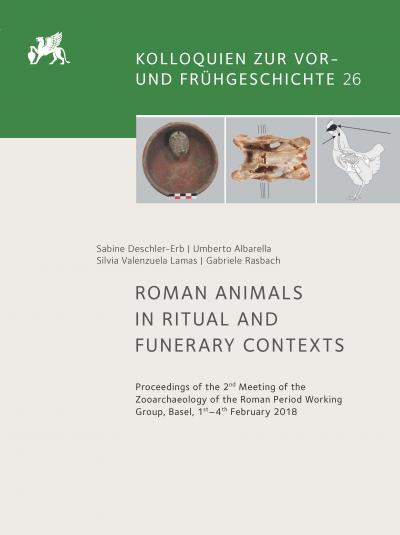Tierknochen aus dem Heiligtum der Größeren Götter Domnus und Domna in Sarmizegetusa (Rumänien)
https://doi.org/10.34780/u7ccxlzkma
List of Contributors
- Constanze Höpken [Chapter Author] https://orcid.org/0000-0002-3664-7469
- Manuel Fiedler [Chapter Author] https://orcid.org/0000-0002-2558-7317
Synopsis
In the area sacra of Colonia Ulpia Traiana Sarmizegetusa in Dacia a little shrine was excavated which was dedicated to the Greater Gods Domnus and Domna. The temple was set up by a centurion of the legio III Italica named Gaius Postumius Pansa as an inscription reveals. In and around the temple many deposits were found of which several contained animal bones. The animal species spectrum of bone finds from the sanctuary in general would not be unusual in settlements. Characteristic phenomena of ritual contexts, such as high numbers of chicken bones, appear in some contexts, especially in deposits inside of the temple and in a complex (context 50), which presumably consists of remnants of cult ceremonies. Unusual for a ritual complex seems the rather high proportion of bovine bone: halved cattle jaws and shoulder blades were probably remains of cheap smoked food. In particular, halved bovine mandibles can be found in deposits with lamps and/or incense burners. Other parts of the skeletons as skull parts with horns were carefully laid down at the foundations of the walls. The remaining parts of the animal may well have been used in celebrations and were eaten afterwards. In particular, two deposits of burned bovine bones also point to the importance of bovine ritual: Since there were no burn marks and charcoal remains in the vicinity, the bones must have had contact with fire outside of the pits. Only after that bones had been carefully selected and were ‘buried’ in the pits. The archaeological findings can therefore be read as an elaborate process before their deposition, from the killing, the probable eating of the meat, burning of the remains, the careful separation of fire debris and calcined bone to the transfer of the bones in the prepared pits, as a final presentation of the gift to the pair of gods.




